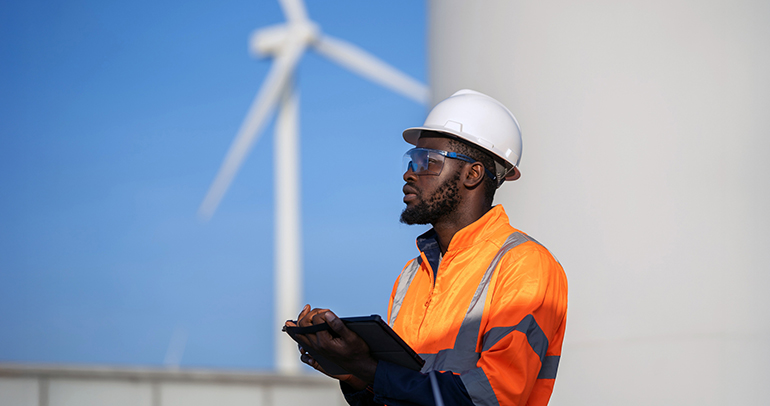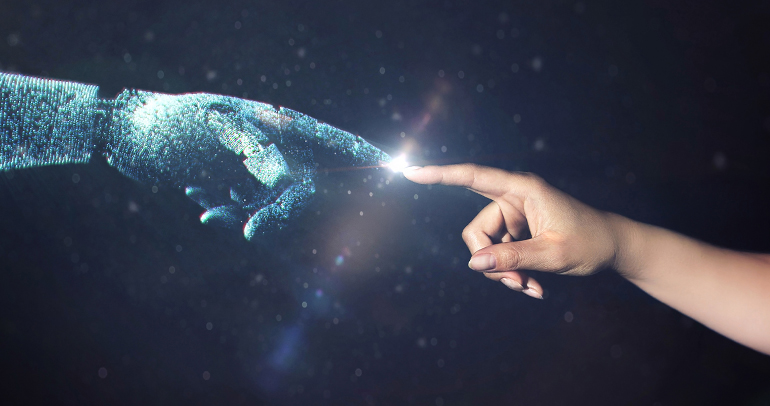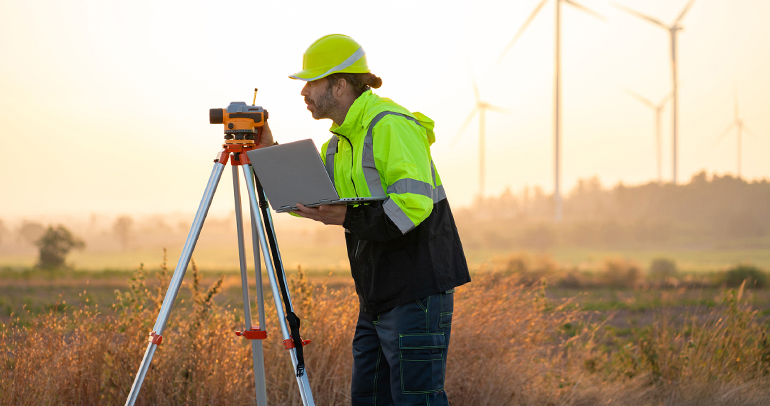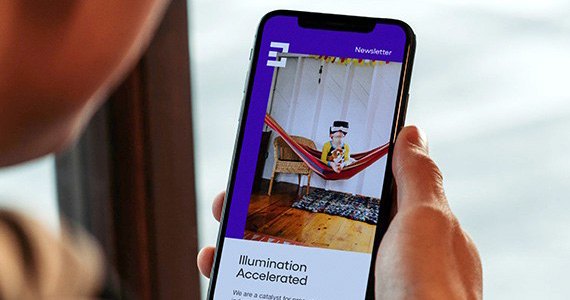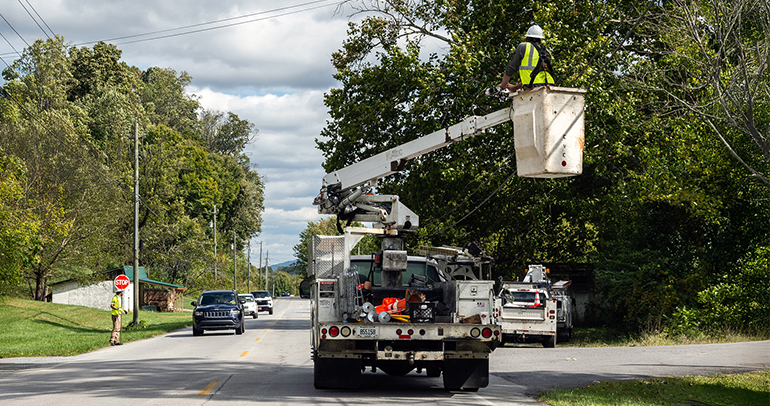
How have you used electricity today?
It’s 7 a.m. and I’ve already:
- Glanced at the subtle glow of my bedside clock.
- Woken up in a condo that’s almost the right temperature thanks to my building’s forced-air heating system (it’ll be just right in a few hours as the sun heats the side of the building).
- Turned on overhead lights in two rooms.
- Heated a kettle of water for the French press.
- Fetched cold milk out of the refrigerator.
- Powered on a laptop and two monitors.
I’m not just sharing my morning routine; my point is that we commonly don’t think about all the ways electricity enhances our lives. Until it’s gone, that is. Had I woken up to no power? A different 7 a.m., I would have:
- Picked up my half-charged phone in confusion after glancing at a dark bedside clock.
- Woken up in a condo a bit colder than I’d like.
- Tried to turn on overhead lights in two rooms because of muscle memory.
- Hoped buildings a few blocks away had power so I could find coffee and internet.
- Checked my utility’s online outage map using cell data to ensure the outage is on the utility’s to-do list.
Past that, I’m waiting for the line workers.
Honoring the Heroes—Electric Utility Line Workers—Who Keep the Lights On
Each year on April 18 we give props to the dedication, skill and sacrifice of the line workers who work behind the scenes to keep us powered on. Linemen Appreciation Day was officially established by Congress in 2013 to honor line workers (and let’s be clear—this isn’t a guys-only club anymore, so I’m not referring to them as linemen).
Having spent my formative years in hurricane country, the labor of line workers has always been visible to me. After a storm rolled through—sometimes while remnants of winds and rain were still around—we would eagerly await a sighting of the electric utility company truck. Provided the phones were working (landlines, y’all), we’d get updates from around town as workers poked and prodded their way through overturned trees and other detritus.
When there was a confirmed sighting within walking/bicycling distance, the neighborhood kids would gather as closely as the electric utility line workers would let us to watch them work, righting and scaling poles, situating bucket trucks, evaluating and repairing damaged tidbits and, finally, turning the lights back on.
The kids would applaud and adults would sometimes walk over with six-packs of warm beer and the occasional bottle of brown liquor as an extra “thank you” for the crew—not necessary (and undoubtedly against utility rules), but we like to feed and hydrate our helpers in the South.
Utilities Have a Significant Opportunity to Shed Light On Electric Line Worker Efforts
These electric line workers are the backbone of our electrical infrastructure, but their role can fade from visibility with a streamlined and undergrounded infrastructure, especially in areas that don’t see frequent weather-related outages.
When I mentioned waiting for line workers earlier, I never actually see line workers these days, mostly because I don’t see electric powerlines—in my neighborhood, they’re all underground. But these teams are out every day, not just repairing problems but working on installations, upgrades and general grid maintenance.
This behind-the-scenes role has opened an opportunity for utilities to put a spotlight on line workers while increasing customer perceptions related to utility safety and reliability.
Since the advent of social media, utilities have learned the value of sharing a “hero story” focused on the restoration efforts of electric line workers. It’s often a one-two punch: utilities share photos of system damage (often taken by the first wave of line workers—everybody with a smartphone is walking around with a decent camera in their pocket these days), then they share photos of restoration teams in action. This makes customers aware of the extent of the damage and humanizes the people repairing things.
Electric Utility Line Worker Hero Stories in Action
Mississippi Power put this exact plan into action when a line of destructive storms came through its service territory on February 15, 2025.
The company shared photos of broken poles and downed wires taken before dawn the next day, letting customers know crews had worked safely through the night. Several hours later, it shared photos of the crews in action, removing windblown branches from overhead lines, replacing guidewires and reattaching/replacing other vital components.
Discerning financial return on investment (ROI) on social media efforts can be tricky, but relational ROI for posts like these is immediate and obvious. Customers will thank the company and the crews in the comments and tell the line workers to be careful; many will also share the posts, resulting in an organic messaging boost.
Mississippi Power’s overall outage communication game is strong: in the first quarter of 2025, Mississippi Power was the top-scoring company nationally among electric and combination utilities for the Safety & Reliability Index, a significant component of Escalent’s Cogent Syndicated Utility Trusted Brand & Customer Engagement: Residential study.
Puget Sound Energy had a similar strategy during a multiday outage caused by a November 2024 bomb cyclone, posting a series of photos that kept customers apprised of the utility’s progress.
A couple of weeks later, the utility received a batch of hand-drawn cards from Issaquah School District students thanking crews and utility staff members for their hard work in restoring power. The utility, which performs in the top quartile among residential electric and combination utilities in Cogent Syndicated’s Safety & Reliability Index and saw improvements in related scoring for the fielding quarter after the event, shared screenshots via Facebook and got 30 shares, expanding reach and positive comments for the students and line workers alike.
Effective Outage Communication Encompasses More Than a Focus on Line Workers: Four Vital Elements to Positively Impact Utility Customer Perception and Brand Trust
Hero stories are only part of an effective outage communication strategy. Here are four additional vital outage communication elements that have a positive effect on Safety & Reliability and Brand Trust scoring, according to our Utility Trusted Brand & Customer Engagement: Residential study findings.
- Proactive outage alerts: These help customers answer one eternal outage question: “Does the utility know my power is out?” As utilities have improved their outage management systems alongside enhanced outage communication strategies, the percentage of customers who recall receiving proactive communication about their outages has steadily increased, but there’s still room for improvement: in the first quarter of 2025, only 22% of customers who had experienced an outage lasting longer than five minutes within the previous six months reported their utility had proactively contacted them about the outage.
- Number of people affected: Sharing this information lets customers answer the second eternal outage question: “Am I the only one without power?”
- Field crew status: Customers want to be sure their utility knows the extent of any damage, and they want to know whether help is on the way or, better yet, is already on site.
- Estimated Restoration Times (ERTs) and updated ERTs: While receipt of initial and updated ERTs correspond with a scoring boost, accuracy matters—customers who report their power was restored later than the estimate received give their utilities Safety & Reliability scores that are lower than customers who received no outage information at all.
Find the Right Blend of Outage Communication for Your Electric Utility Customers
Today’s electric utility customers expect real-time updates and transparency when their lights go out, and the way your company communicates during outages can directly influence Brand Trust.
If improving your outage communication strategy is a priority, Cogent Syndicated’s Utility Trusted Brand & Customer Engagement: Residential study can help. We offer actionable insights to help electric, natural gas, and combination utilities enhance the customer experience, reduce effort and build lasting loyalty—especially when it matters most.
To learn more about how our Utility Trusted Brand & Customer Engagement: Residential study can help your utility identify actionable insights, fill out the form below to talk with one of our energy industry experts today.
Want to learn more? Let’s connect.


